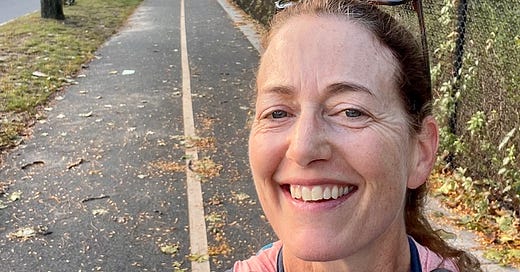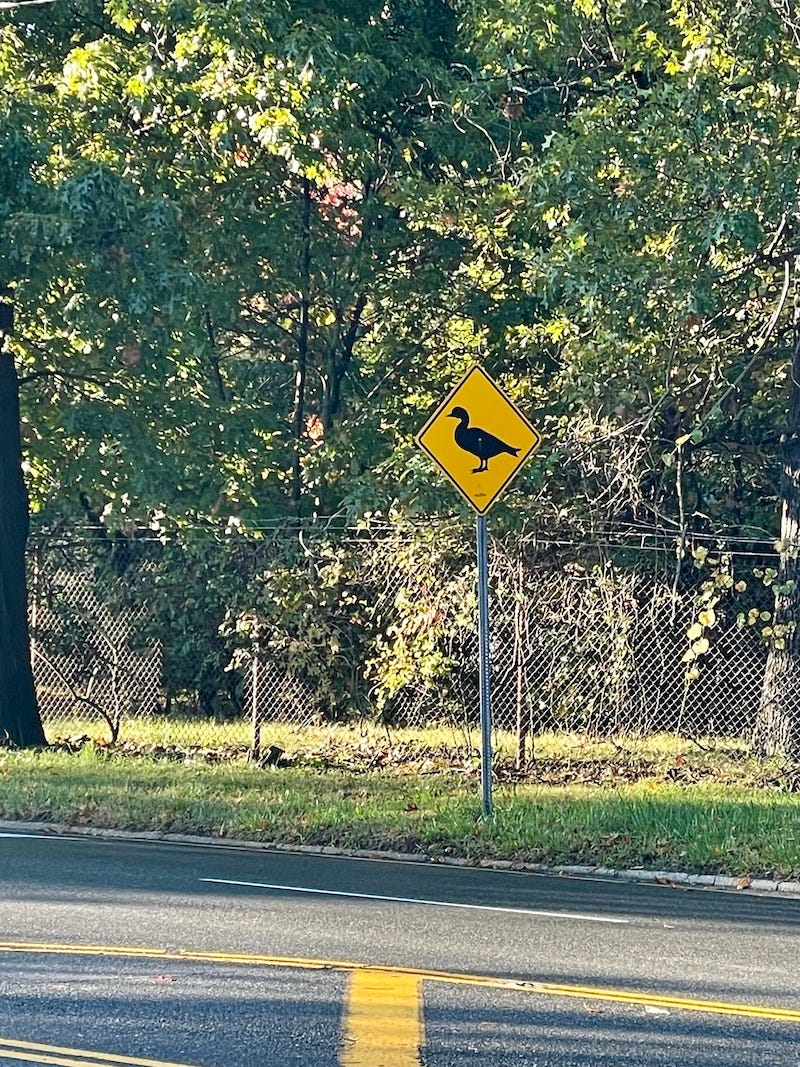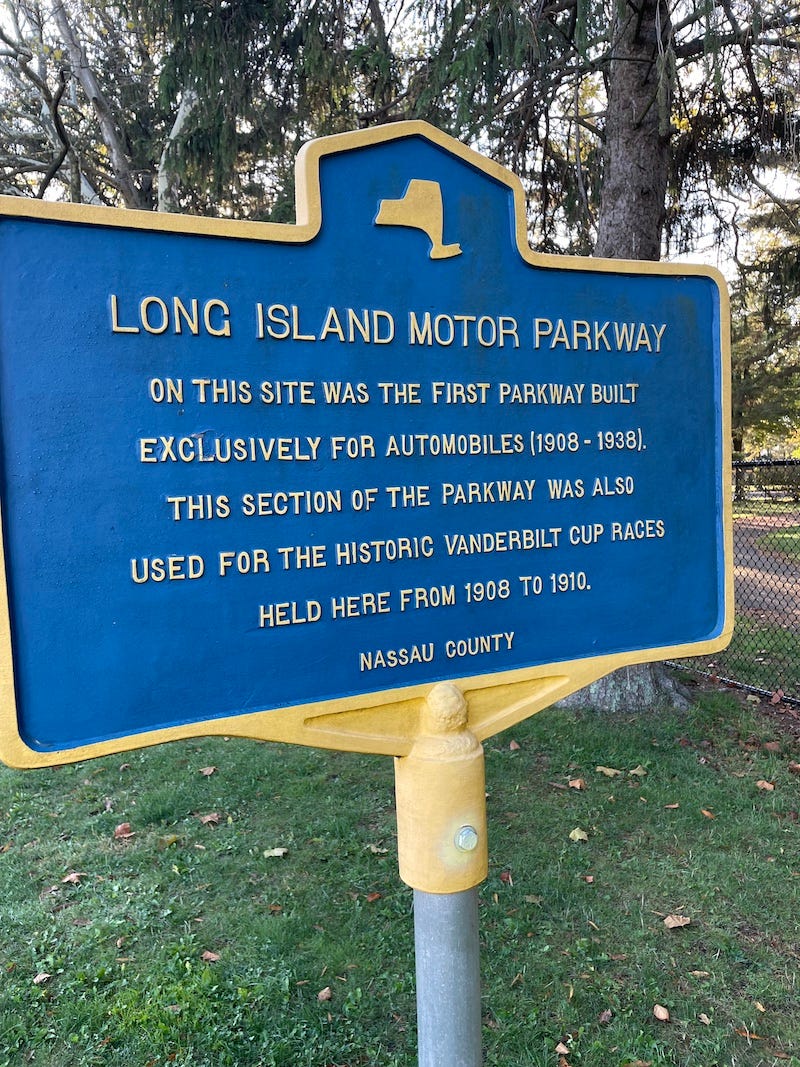I’m gratified this newsletter gained numerous subscribers this past week. If you’re one of the new subscribers, I encourage you to check out this recent anniversary post as an introduction to what these weekly posts are all about.
Due to travel and some life stressors, I’m keeping this week’s post shorter than usual. It’s about an unexpected run. Mundane runs that surprise are some of the best. Feel free to describe your ordinary-yet-special run in the comments below.
All signals predicted a crap run last Sunday morning. I woke up in Long Island, the morning after my niece’s wedding, dehydrated and headachy from a moderate amount of beer and a single glass of wine that would have had a negligible effect at a younger age. My stomach felt bloated from steak and cake. My feet hurt from dancing in heels. My body had felt out of sorts for five days straight due to a covid booster shot followed by airplane travel and large, over-salted restaurant meals.
Nothing about the landscape outside tempted me to run. Traffic clogged intersections even on a Sunday morning. Sidewalks ended for no reason, creating a pedestrian-unfriendly web of streets around a light-industrial district cluttered with tangled power lines, spooky warehouses, and sad-looking storefronts.
My phone’s map revealed a large rectangle of green two miles away called Eisenhower Park, filled with golf fairways. A bike path appeared around its perimeter. I drove there in our rental car, expectations as low as the sea-level elevation.
Why was I even out for a run rather than sleeping in like the rest of my extended family? Force of habit. It’s what I do on trips, to see a new area and to feel like my better self.
But I can’t count on feeling like “the runner” my family introduces me as. Running hasn’t been working its magic, ever since my training peaked over summer in preparation for my goal 100. Instead of feeling empowered, I feel sluggish and creaky. I go through the motions but don’t feel emotion, the runner’s equivalent of lack of libido.
I told myself I’d run at least a half hour, see how it goes.
A smooth, flat, uninterrupted paved path stretched some five miles around the green oasis. The air felt saturated with oxygen and moisture, and I breathed deeply as if in a steam shower to humidify my lungs. I had the path almost to myself.
I started slowly to work through stiffness and settled into what felt like a mellow pace. When I looked at my watch, I saw I was running in the mid-9s, which would feel fast back home in the high altitude. Here, it felt comfortable.
What if, I asked myself, I did a set of strides after the first mile? That used to be part of my regular routine. But I stopped doing strides and speed intervals earlier this year because I rarely run a flat, steady path like this, and even if I do, the surges leave me gasping for air. I can’t stand how slow the intervals make me feel in spite of the effort, because my pace for “speed” in Colorado registers numbers that I used to consider “easy” when I trained in California.
I jogged in place, letting my watch get to the next minute’s 0 to start a 30-second interval. Then I took off as if sprinting 100 meters on the straight side of a track, feeling like an airplane speeding down a runway toward takeoff. Too soon, the 30 seconds were up, so I jogged a half minute to recover, then repeated. I did six 30-second strides that way.
I felt a spring in my step the next mile as I contemplated how to run next. I could simply run comfortably, or I could structure the remaining time to challenge myself.
The choice was made for me when I turned the corner and spotted a high school. Do I dare run behind the school, where I could spot a football goal post and some stadium bleachers? Yes, I dared.
I felt myself drawn to the backside of this school, where surely I could access a track, the same way I felt drawn to touch a piano to see if my fingers could still work out some chords and melodies when months or even years had lapsed since my last lesson.
We do not have a track in Telluride. I couldn’t recall the last time I had run on a track. A year, at least. But I had been thinking of it and missing it. My old track buddy celebrated a birthday recently, which made me nostalgic for our weekly meetups for intervals.
This track, which looked brand new and clean—not a scrap of litter blemishing its field of artificial turf—was deserted except for two walkers on the outside lanes. No locks or signs warned me away. I entered and made a deal with myself: Just try. Just go for it. Just for one interval.
I did not have time for a full workout, because I had to run back to the car and get back to the hotel on time. But I would give myself an 800-meter taste and challenge. Just two laps.
When I was faster, in my late 30s and early 40s, I ran 800M intervals at 3:00 - 3:10 at what felt like 90 percent max effort. Full-blown effort would get me slightly under 3 minutes for two laps, and when the stars aligned with my stoke, I could break 6 at the mile. When I got more into ultrarunning and aged past 45, the 800-meter times slipped to 3:25 - 3:40. How fast could I run a half mile now at age 53, when I’ve normalized a 12 minute/mile pace in the San Juan Mountains with so much hiking mixed in? Can I even run a sub-8-minute pace anymore?
I shushed the questions in my head, hit my lap button, and took off, focused on the hypnotic white lane lines painted with perfect edges on the brick-red rubber surface. Halfway around the first lap, I felt my legs and lungs rebelling from the effort, so I dialed back the pace a notch. “Ease up, don’t give up,” I used to tell my clients.
I refused to look at my watch while running, wanting to focus instead on the feel. Nothing got in the way of this running—no rocks, no slopes, no excuses. This quick, full cadence, with legs pedaling and heels on the back stride rising up toward my butt, felt both familiar and forgotten, like a chance meeting with a high school friend. I used to run this way, before evolving into the mountain trekker I am now.
My lungs burned from heavy breathing, but the humidity and oxygen-rich air replenished them. I could sustain this close-to-max effort. When I came out of the final curve with 100 meters to go, I visualized a rock snapping out of a slingshot and sprinted as if closing the gap on someone with the finish line in sight.
I crossed in 3 minutes, 39 seconds. Not nearly as slow as I had feared. I gulped air and smiled while walking to catch my breath, savoring the 7:20ish pace. It’s hard for me to comprehend that when I PR’ed at the marathon at age 39, my pace averaged slightly sub 7:10 for a 3:05 finish. I can’t fathom sustaining that speed for 26 miles when this half mile felt so challenging—and exhilarating. In any case, relief washed over me that I can still run sub-8 when my Colorado norm is a heavy-mouth-breathing jog.
I had a little over two miles to run back to the car. I decided to run what felt like a tempo pace on the way back, “sustainably hard.” The two miles ticked by at a pace in the low 8s. I never run this well back home.
I couldn’t help comparing/contrasting this part of New York with southwest Colorado. I am blessed to live in these mountains, near a town with no stoplight. And yet, the downside to mountain running came into focus on that paved Long Island bike path and its high school track, where running felt smooth, flowy, and easier.
There’s no such thing as an “easy” running pace near my house except on less technical downhill. I’m always running in the medium-to-hard effort zone in terms of breath and heart rate, unless I take hiking breaks or keep my “running” to a relaxed baby-step jog. All of that mountain running—adapting to such a slow pace in such thin air and challenging terrain—has eroded my confidence and made me stop thinking of myself as the runner I still am deep down.
I felt flush with endorphins and satisfaction post-run in a way I rarely do anymore. And to think, I almost didn’t run that morning because of how I felt at the start. I drove back in our rental car reminded of three things:
Start easy and with low expectations. The important thing is to get out and start. Never judge a run by the first mile.
Don’t give up on speed work. It should be part of any runner’s routine.
Don’t give up on yourself. Under the right circumstances, no matter your age, you can unleash your potential.
That run left me motivated. I’m eager to start with a new coach in December, who surely will assign me speed sessions. I’m determined to run more frequently on the lower-elevation bike paths an hour or so from home, where I have to go anyway for errands, so I can experience the antidote to slow, rugged mountain running. And I’m excited to time myself on intervals again, playing the game of trying to shave off a second or two.
When was the last time you did something that made you think, “I still got it!”?
This blog post “End-of-Season Review: Are you asking the right questions?” by CTS coach Darcie Murphy is worth reading. It’s basically a series of prompts to reflect on the past year’s training along with your goals met and unfilled, probing “the why’s.” I plan to work through the questions and share my responses next week.








The brain is out. The body is somewhat in the game, yet after some time is added to the recipe, age IS a real number...
AND the reward is right there to last you the whole day, and on into the next!
Good turnaround Sarah! Looking forward to this afternoon
I have a new neighbor/friend who moved to the house next street, she is just a tad younger, but fully into Ironman training and racing. Her "off the bike" runs are in low 9's. I promised I will join her for some track workouts once this season is over. Yes, it used to be a staple. I am terrified. My "tempo" pace these days on flat street is just under 9:30, and I barely hold it for maybe 4 miles. Yup. Fun times ahead:) Good for you for giving it a shot!